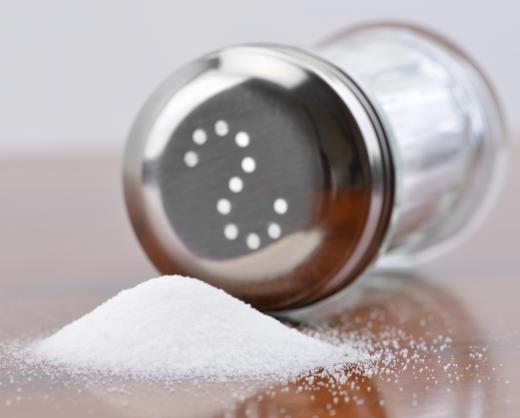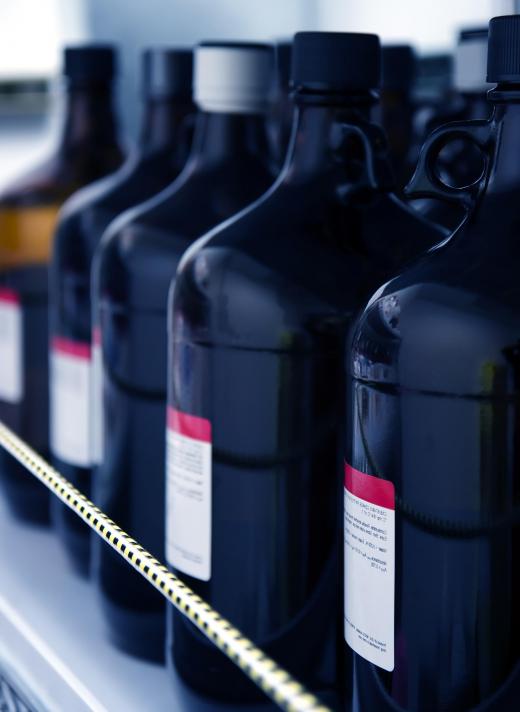What Are Colligative Properties?
A colligative property is a descriptive characteristic used in solution chemistry. Most simply, colligative properties are those properties of solution that depend on the number of solute molecules in a given solution, but not on the identity of those solute molecules. There are only a few properties of solution that are colligative: vapor pressure, boiling point elevation, freezing point depression, and osmotic pressure. Colligative properties are defined for ideal solutions only.
In chemistry, solutions are defined as consisting of a solute, or the dissolved substance, and a solvent, or the dissolving substance. For example, if a bit of table salt is dissolved in water, the salt is the solute, and the water is the solvent. Colligative properties of this solution are properties that depend only on the number of molecules of salt, or the ratio of the number of salt molecules to the number or solvent molecules. The colligative properties of solution do not depend on the fact that the solute is salt, or on any of salt’s characteristics. A colligative property is a property that for any solution will behave in the same way, whether the solution contains salt, sugar, or any other possible solute.

Of the four colligative properties of solution, vapor pressure, boiling point elevation, and freezing point depression are closely related. Vapor pressure as a colligative property is described by Raoult’s law. Raoult’s law basically states that for an ideal solution, the vapor pressure of the total solution depends on the vapor pressure of each of the chemical components, as well as the mole fraction of each of the chemical components in solution. More practically, this relationship means that as a solute is added to a solution, the change in vapor pressure depends only on the ratio of solute to solvent molecules. Once again, because it is a colligative property, the change in vapor pressure does not depend on the identity of the solute being added.

Boiling point elevation and freezing point depression are colligative properties that each change in tandem with changes in vapor pressure. When a solute is added to solution, the solutes lower the vapor pressure of the solvent. The change in pressure causes a corresponding increase in the boiling point, and a decrease in the freezing point of the solution. In other words, when a solute is added to a solution, the solution now will boil at a higher temperature, and freeze at a lower temperature.
Osmotic pressure is the fourth colligative property of solution. Osmosis is defined as the movement of solvent molecules through a semi-permeable membrane into an area that contains a higher number of solute molecules. Osmotic pressure is the amount of pressure that needs to be applied to one side of the semi-permeable membrane to prevent the solvent from flowing through. The osmotic pressure of an ideal solution at a constant temperature is proportional to the concentration of solute, or put another way, is dependent only on the number of solute molecules.
Colligative properties of solution may seem complex to define, however, they can be intuitively understood through a few common examples. Many cooks add salt to a pot full of water when cooking pasta, which causes the pasta to cook more quickly. This action takes advantage of a colligative property. The addition of the salt increases the boiling point of the water, which allows the pasta to cook more quickly at a higher water temperature.
The freezing point depression is also commonly taken advantage of by chefs. Both sugar and salt as solutes help ice cream to freeze. The sugar in the ice cream affects the temperature at which the ice cream freezes, and salt water around the ice cream vessel creates a colder environment in which the ice cream will freeze more rapidly.
AS FEATURED ON:
AS FEATURED ON:












Discussion Comments
How are the colligative properties related to each other? What is the relation between the relative lowering in vapour pressure and the elevation of the boiling point?
Post your comments